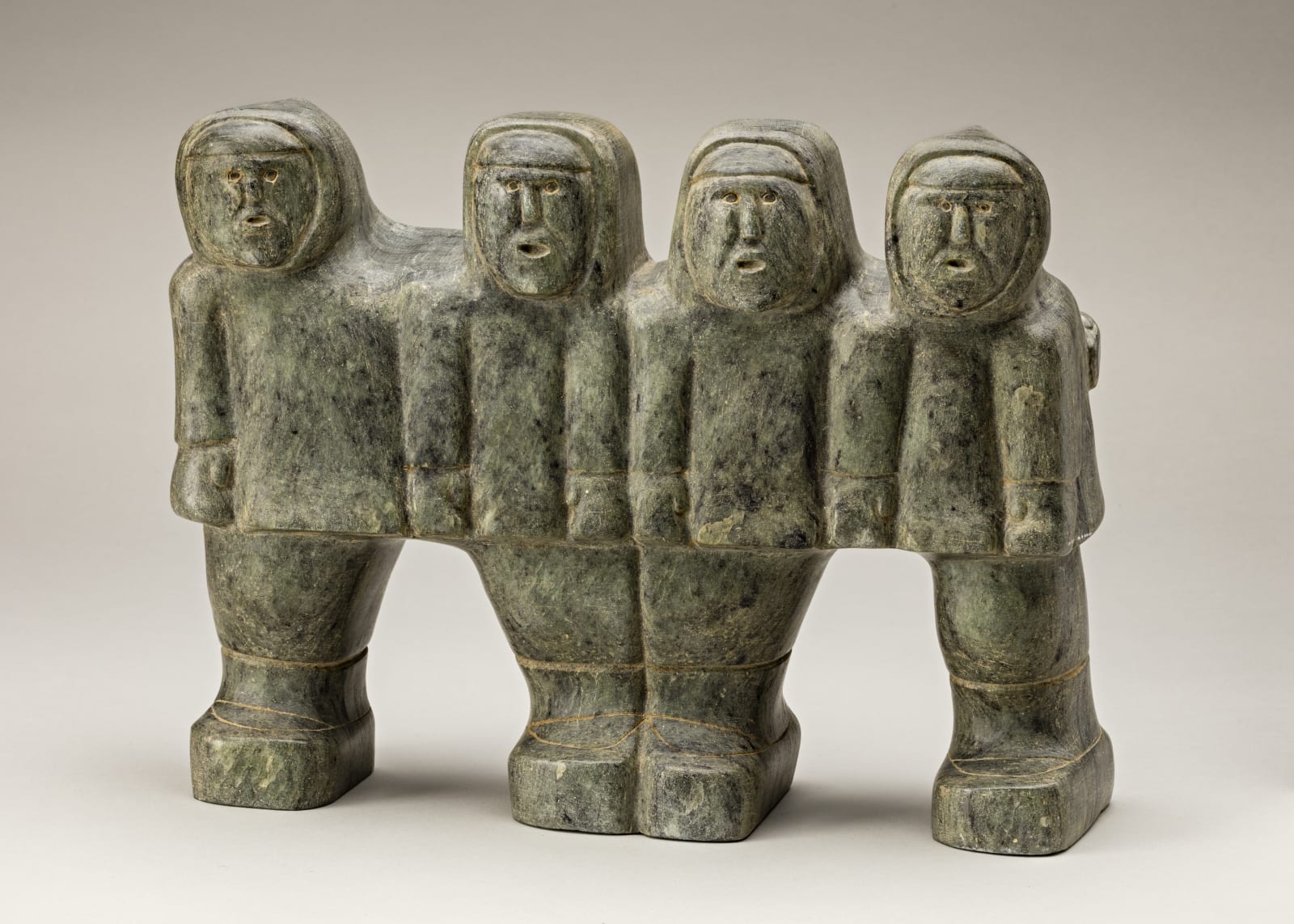SOLOMONIE TIGULLARAQ (1924-2000) Kangiqtugaapik (Clyde River)
Four Men Standing Together, c. 1967-68
signed, "ᑎᒍᓚᒐ";
inscribed with artist's disc number, "E5347".
inscribed with artist's disc number, "E5347".
9 1/2 x 12 x 4 in
24.1 x 30.5 x 10.2 cm
24.1 x 30.5 x 10.2 cm
stone
This highly appealing sculpture is one of Tigullaraq’s largest, and is likely his most populated work as well. Its most remarkable feature is the radical and ingenious simplification of the...
This highly appealing sculpture is one of Tigullaraq’s largest, and is likely his most populated work as well. Its most remarkable feature is the radical and ingenious simplification of the men’s lower bodies. Visually this can be read two different ways: either each pair shares a set of massive legs, or each man has only one leg. Either way, the effect is slightly disorienting, highly amusing, and brilliant.
In her article for IAQ (see reference), Maria Von Finckenstein suggests that this sculpture represents only two men rather than four, and symbolizes the Inuit sense of duality. We respectfully disagree. We are fairly certain that the scene implies love or comradeship; we see it as either two sets of brothers, two fathers and sons, or two pairs of great friends. Note that seen from the front, the figures collectively lack not only two legs but also a couple of arms. That is because one of each pair of men extends an arm across the back of his companion (much as the bear does in "Man and Bear," also in this exhibition).
In her article for IAQ (see reference), Maria Von Finckenstein suggests that this sculpture represents only two men rather than four, and symbolizes the Inuit sense of duality. We respectfully disagree. We are fairly certain that the scene implies love or comradeship; we see it as either two sets of brothers, two fathers and sons, or two pairs of great friends. Note that seen from the front, the figures collectively lack not only two legs but also a couple of arms. That is because one of each pair of men extends an arm across the back of his companion (much as the bear does in "Man and Bear," also in this exhibition).
Literature
Published: Maria Von Finckenstein, “Salomonie Tigullaraq: One of those Unnoticed Artists,” (Inuit Art Quarterly, Winter 2001), p. 42.1
of
18

